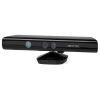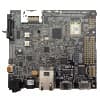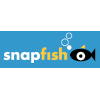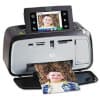
A more formal pdf version is here
I am currently working at ServiceNow which produces a heavily used workflow platform. I started on the Systems Engineering team improvging many of the behind the scenes automations working. I then moved the Creative Workflows team working on Application Engine Studio and associated plugin. The site is located here
InstantInk

At Hewlett-Packard, I worked on the Instant Ink team to develop the InstantInk program. Customers can sign up, pay a small monthly fee, and have ink delivered directly to them. The project is using Ruby on Rails, mysql, and nginx to create a robust, world-wide web site. The project also adopted the "Pivotal Method" incorporating paired programming and rapid switching of program tracks giving each developer a more global picture. The site is located here
New User Interface


I spend about six months prototyping NUI ideas using a Primesense depth sensor (used in the Kinnect) as well as two TI OMAP Pandaboards, one running an embedded Linux and the other running Android. The idea was to explore ideas around created a user interface experience projected onto a wall or desk using the depth sensor to track fingers and hands using them as input devices. I was able to create a tablet-like experience but on a much larger surface projected onto your desktop. The learning were to be used in a new consumer electronics project which was subsequently dropped. I filed a patent based on the work.
The embedded linux code was written in C and was mostly low-level driver work. We also took advantage of the hardware acceleration modules provided by the OMAP chip to improve the matrix processing of the Primesense code. The Android work was in Java.
Snapfish

I worked on several parts of the the Snapfish web site. Initially, I worked on the Photo Books Adobe Flex app, which allows customers to upload images and place them on a photo book. The app allows for accurate review before purchase. There are many sophisticated algorithms employed to make it easy for customers to produce a professional and appealing photo book.
I then worked on the landing page as well as the photo card store. These were written using extensive JavaScript as well as support from a Java/Tomcat backend. We also used Apache Lucene to enable faceted search of photo cards.
Take a look at snapfish. Under "Shop" you will find the photo books and cards section.
HP Photo Printer

HP produced a line of mini photo printers that were some of the first printers to include a UI that allowed selecting, editing, and printing of a range of photos up to 5x9 inch prints. I was the lead engineer developing the embedded UI from scratch in C.
